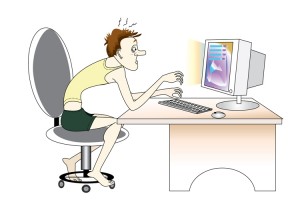Webinars have been around for at least ten years now and have advanced from the “dubious” dial-up connection, where people were unsure how much it would cost them to attend once call changes etc had been applied, to today’s very savvy online events where you simply click to show you have joined – you would usually have registered in advance.
In essence they are an online version of a traditional seminar. They can be used for training, promotion, corporate announcements, press conferences, focus groups, presentations and much more.
Webinars are very cost-effective. Nobody has to leave their desk – the beauty of a webinar is that you can present and attend it from anywhere in the world as long as you have an internet connection – and in fact many event organisers now provide audio downloads of the webinars post-event to those who couldn’t make the live show. You would either provide a slide presentation to accompany your audio or you would give a live presentation. Depending on the type of event you would decide which method was more appropriate.
You can plan your webinar to have varying degrees of interactivity where presenters and participants can give, receive and exchange information in different ways.
The mistake some people make is not treating the webinar like a physical event – this shows from a viewing perspective. To put on a successful, well-attended webinar you have to consider numerous activities. In this post I’m just going to touch on these and will expand in future posts.
Planning – you need to consider what you are going to discuss, what the purpose of the webinar is and also who you are going to invite to attend. Note that registrations very rarely mirror attendees for webinars. People book to attend and something comes up, they forget etc – it’s one of the downsides of virtual events, but you cannot get hung up on this and there are ways to maximise attendance on the day.
Strategy – you should think about whether this event will be a one-off or part of a series, and plan your content accordingly. You need to develop your webinar strategies in line with your overall events/marketing strategy and identify the people you want to be there.
Marketing the webinar – you have to find an audience, get people to register and then get them to actually attend. Obvious, yes! But, easier said than done. This is why defining and implementing effective marketing strategies and programmes is vital to your webinar’s success.
Webinar Tools – you must consider which software you will use – these days there are numerous suppliers of web conferencing and related tools. Which service you go with will depend on your objectives, intended audience and budgets along with other aspects of your event. You have to consider your visual and audio presentation, the registration tool and overall event planning and marketing and ensure the selected supplier is stable, supportive and flexible.
Implementation – make sure you have your touch points planned in advance (the webinar itself is just one marketing opportunity / touch point) so you are contacting those registered prospects before, during and after the event. Ensure registration is easy and your automated responses are customised. Manage your event professionally – be well prepared and provide a solid structure and flow. Check your technology works BEFORE the event and if you have multiple speakers, make sure they all know their timings and what is expected from then. You should have a rehearsal about a week before the live event to allow time for material modification if necessary.
On the day of the event you need to remind registrants they are attending and give them joining details. You must also double check logistics and have contingency plans in place for equipment, communication lines and email contact details in case there is a problem.
And of course, don’t forget your debrief and follow-up.
If you need further information at this stage, please let me know.

